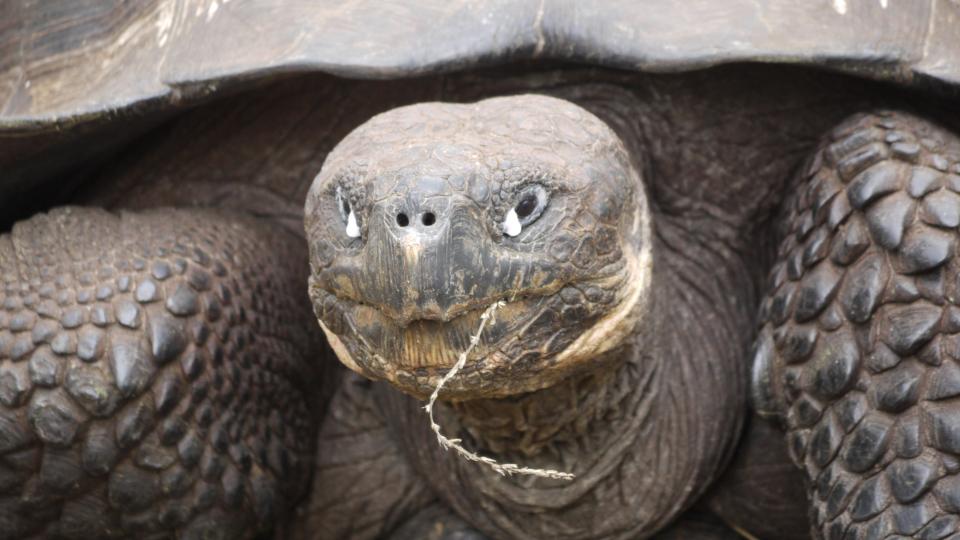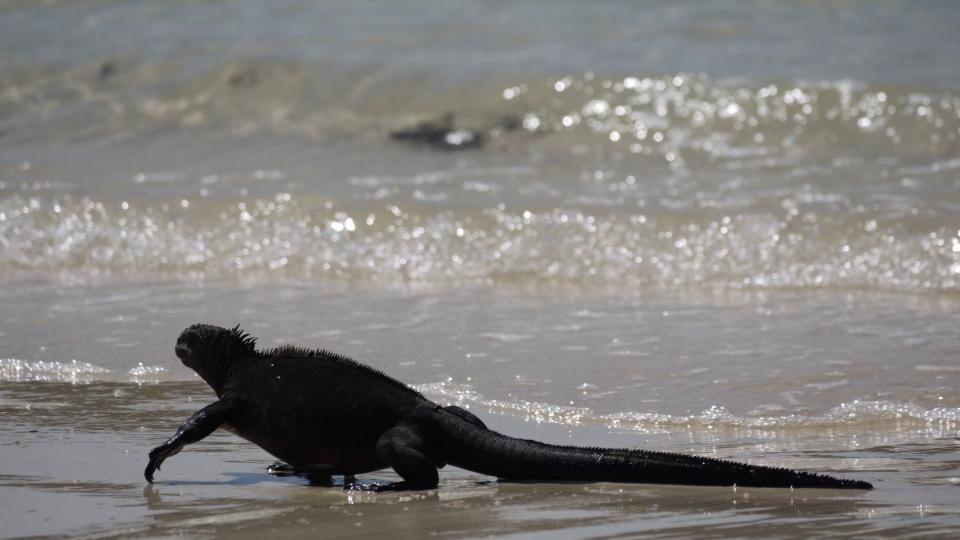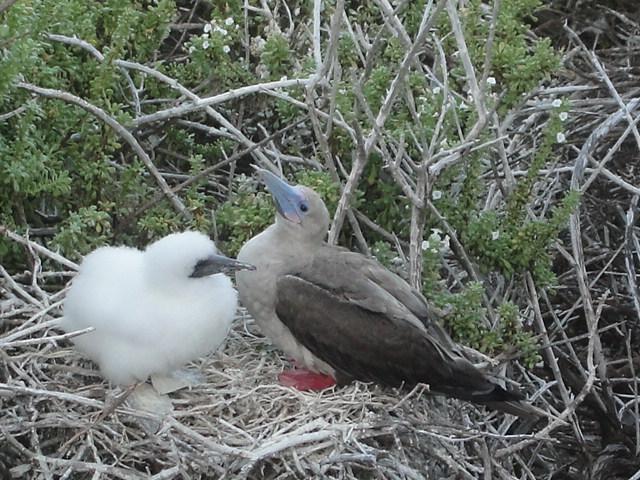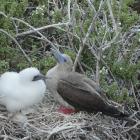The archipelago of the Galapagos consists of numerous islands, islets, and rocks and is situated some 1,000 kilometers off the Ecuadorian mainland in the Pacific Ocean. Its isolated location at the confluence of three oceanic currents, volcanic origin, and ongoing seismic activity has resulted in a unique environment, where fascinating marine life and terrestrial endemic species of flora and fauna have evolved. Animals like the giant tortoise (Chelonoidis nigra), the variety of Iguanidae, and numerous subspecies of finches all inspired Charles Darwin’s theory of evolution by natural selection. Since Darwin’s visit in 1835, the archipelago has attracted the attention of international science and, increasingly, nature tourism.
Conservation efforts in the Galapagos Islands have transcended both the archipelago and the Ecuadorian state from the outset in the 1930s. At that time naturalists from Europe and North America became increasingly concerned about the diminishing number of species on the islands after decades of resource extraction by local inhabitants and the collecting frenzy of numerous scientific expeditions. The American Committee for International Wildlife Protection and the British Association for the Advancement of Science urged the Ecuadorian government to take protective measures and establish a permanent research station as controlling institution on these remote islands. In 1935, a motion by a joint Anglo-American expedition, the Darwin Memorial Expedition, which included US travel writer Victor von Hagen, finally resulted in a governmental decree for the creation of a “Wild Life Sanctuary of the Galapagos Islands.” This reserve was created in 1936 by chief executive Federico Páez “to promote the development of the sciences and assist in every manner possible to realize such cultural progress” and prevent further species loss due to “depredations of unscrupulous travelers and tourists.” However, insufficient implementation and the geopolitical requirements of World War II, when the Galapagos island of Baltra served as a US military base, rendered the decree’s stipulations largely ineffective.
Conservationist efforts concerning the Galapagos became more concrete in the 1950s, when prominent scientists, such as Julian Huxley and international organizations such as the IUCN and UNESCO, promoted an ecological approach to international nature conservation and accorded top priority to the preservation of the Islands’ flora and fauna. In 1957, UNESCO and IUCN jointly commissioned German ethologist Irenäus Eibl-Eibesfeldt and American biologist Robert I. Bowman to the archipelago in order to assess the situation and identify a suitable site for a scientific research station. Media coverage by the illustrated Life Magazine, which accompanied the expedition in the run-up to the upcoming centennial of Darwin’s “On the Origin of Species,” raised international public awareness of the urgent need for effective protection of “Darwin’s living laboratory of evolution.”
In response to these processes, the Ecuadorian Government passed an emergency decree in 1959, formally establishing the Galapagos Islands National Park (Parque Nacional Galápagos). Based on earlier legislation, this decree underlined Galapagos’ importance for science, its potential for tourism, and the need for a scientific station, thus taking up recommendations and rhetoric regarding nature protection from scientific institutions overseas. The boundaries of the park were drawn to include 97% of the Galapagos Islands, leaving enclaves only for already existing human settlements and the military base on Baltra island. In the same year, UNESCO promoted the establishment of the Charles Darwin Foundation (CDF) as an international non-governmental organization under Belgian Law, with the double purpose of directing a scientific research station and providing assistance for conservation on the islands. Since 1959, the CDF has proved instrumental in claiming the protection of the Galapagos Islands as an international (rather than local or national) responsibility.
The primarily scientific rationale behind the national park soon overlapped with the Ecuadorian government’s interest in the economic development of the islands. There was a steady increase in inhabitants, tourists, and marine resource extraction since the 1960s and the declaration of Galapagos as a province of Ecuador in 1973. This necessitated a master plan prepared by an Ecuadorian inter-institutional working group under coordination of the National Junta of Planning, which concentrated on the economic, infrastructural, and touristic development on the islands. The CDF was thereby assigned to execute a long-term conservation policy in close cooperation with the Galapagos National Park Service founded in 1968. This plan was unable to address all problems on the islands, especially in providing solutions for the interaction of conservation, social contexts, and the marine area, which was also due to changing conservation paradigms around the world. Nevertheless, it paved the way for the inclusion of the Galapagos Islands as a UNESCO World Heritage site in 1978 (extended to include the Marine Reserve in 2001). With this designation, the archipelago’s world-wide significance for science and nature conservation and its international reputation as a tourism destination was manifested, meeting thus the interests of the Ecuadorian Government and international organizations. Darwin’s laboratory of evolution has evolved into a laboratory of conservation concepts, all geared to respond to the ongoing challenges of environmental change on the islands. These include among others the recognition as Biosphere Reserve under the MAB Program in 1984, the establishment of the Galapagos Marine Reserve in 1986, the newest Management Plan of 2006 for conservation and sustainable development, and its designation as World Heritage Site in Danger from 2007–2010.
How to cite
Ackermann, Elke. “Evolution for World Heritage: The Galapagos Islands National Park.” Environment & Society Portal, Arcadia (2014), no. 14. Rachel Carson Center for Environment and Society. https://doi.org/10.5282/rcc/6381.
ISSN 2199-3408
Environment & Society Portal, Arcadia
 This work is licensed under a Creative Commons Attribution-NonCommercial-ShareAlike 3.0 Unported License.
This work is licensed under a Creative Commons Attribution-NonCommercial-ShareAlike 3.0 Unported License.
2014 Elke Ackermann
This refers only to the text and does not include any image rights.
Please click on the images to view their individual rights status.
- Barrow, Mark. Nature's Ghosts. Confronting Extinction from the Age of Jefferson to the Age of Ecology. Chicago: University of Chicago Press, 2009.
- Ciccozzi, Elena. Les Galápagos, gouvernance et gestion démocratique des ressources naturelles. Paris: L’Harmattan, 2013.
- Comité Provisional para la Protección de la Fauna del Archipiélago de Colón. Decreto declarando Parques Nacionales de Reserva, las Islas Galápagos. Tip. Fernandez: Quito, 1936.
- Grenier, Christophe. Conservation contre nature. Les îles Galápagos. Paris: Éditions de l’IRD (Institut de Recherche pour le Development), 2000.
- Larson, Edward J. Evolution’s Workshop. God and Science on the Galápagos Islands. London: Allen Lane the Penguin Press, 2001.
- Ospina, Pablo. Galápagos. Migraciones, economía, cultura, conflictos y acuerdos. Quito: Corporación Editora Nacional, 2007.
- Quiroga, Diego. “Crafting nature: the Galapagos and the making and unmaking of a «natural laboratory»”. In Journal of Political Ecology Vol. 16 (2009): 123-140. (available at http://jpe.library.arizona.edu/volume_16/Quiroga.pdf)












